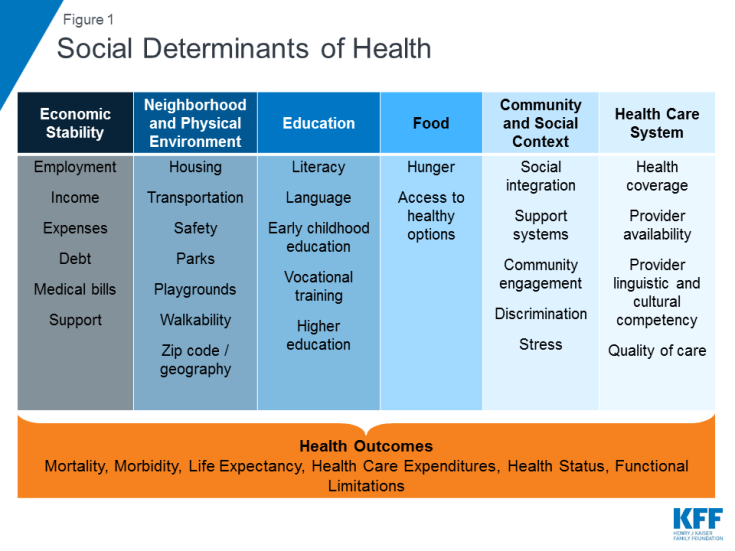Exploring how life expectancies vary across Houston-area neighborhoods.
Houston is home to the world’s biggest medical center, which includes the largest children’s hospital, the nation’s top-ranked cancer hospital, and internationally recognized pioneers in research and medicine. Yet, if you drive less than five miles southeast of the Texas Medical Center, you will find clusters of neighborhoods in the Sunnyside community where the expected life expectancy is as low as 66 years — on par with countries such as Rwanda and Pakistan. Drive five miles west of the Texas Medical Center and you’ll reach a neighborhood in Bellaire where the average life expectancy is 87 years. So, in a simple 15-minute drive through Houston, you’ll find two communities with two vastly different health prospects defined by a staggering 21-year gap in life expectancy. This was a major finding from a recent analysis conducted by the Episcopal Health Foundation (EHF) on life expectancy in Texas. The EHF research team used census-tract level estimates of life expectancy at birth in Texas produced by the USALEEP Neighborhood Life Expectancy Project and demographic data from the U.S. Census Bureau to understand why we see such large gaps in life expectancy from one neighborhood to the next.
Mapping Houston-area life expectancies

For Harris, Fort Bend and Montgomery counties, the USALEEP published life expectancy data for 830 neighborhoods (or “census tracts”). When these neighborhoods are ranked by life expectancy, data reveals that half of the neighborhoods had life expectancies above 78 years while the other half had life expectancies below 78 years. If we divide these Houston-area communities into five equal groups based on their life expectancies, the “healthiest” neighborhoods (those in the top 20%) had life expectancies between 81 years to 89 years. Meanwhile, the neighborhoods in the bottom 20% had life expectancies that ranged from 65 years to 75 years.
When the data from the USALEEP project is matched with demographic data from the U.S. Census Bureau, it reveals stark differences between communities with the longest life expectancies compared to communities with the shortest life expectancies.
- Poverty was significantly correlated with life expectancy in the Houston area. Among Houston-area neighborhoods with the shortest life expectancies, over a quarter of residents (26%) lived in poverty. Yet only 8% of people living in the neighborhoods with the longest life expectancy had poverty-level incomes.
- In Houston-area neighborhoods that have the longest life expectancies, a slight majority of people (51%) are White, 23% are Hispanic or Latino, 15% are Asian, and 11% are Black. In contrast, Houston-area neighborhoods that have the shortest life expectancy had significantly higher percentages of Black (33%) and Hispanic (45%) populations and significantly smaller proportions of White (18.7%) and Asian populations (2.5%).
- Communities in the Houston area with the longest life expectancies had incredibly high levels of educational attainment. 53% of adults living in neighborhoods with the longest life expectancy had a bachelor’s degree or higher. Meanwhile, in neighborhoods with the shortest life expectancy, only 13% of adults had a bachelor’s degree or higher.
A tale of two Houstons
This data underscores recent concerns about how rising income inequality and high levels of racial residential segregation is leading to a “tale of two Houstons” where one set of neighborhoods enjoys increasing levels of wealth and another experiences concentrated levels of intergenerational poverty. Our analysis is a critical reminder that these disparities impact health and well-being in real and tangible ways.
“While this data may feel dispiriting, one thing we are learning in the research is that these differences are not inevitable.”
Recently a major study conducted by economists from Stanford and Harvard found that while there are significant differences in life expectancy between low-income and wealthy Americans, low-income Americans fare better in certain local communities compared to others. The researchers found that the gap in life expectancy between the rich and poor is much narrower in cities located mostly in the East and West coasts compared to cities in the Midwest and the Southern USA. This demonstrates the power of local conditions on community health and should encourage us to understand how we can replicate the successes happening in some local communities to continue to create healthy and vibrant communities for all Houston area residents.
One critical way forward is to ensure that we consider the root causes of poor health when developing strategies to improve health in low-income communities.
Building a broader perspective on health in our communities
In addition to improved access to medical care, a growing body of research is identifying how the biggest influences on population health include factors such as access to healthy foods, housing, transportation, and environmental conditions.

Source: Kaiser Family Foundation, Beyond Health Care: The Role of Social Determinants in Promoting Health and Health Equity
From producing research that illuminates the connection between socioeconomic factors and health to funding community-based clinics to go outside the walls of their exam room and into communities to address underlying causes of poor health, The Episcopal Health Foundation is committed to helping shift the focus on improving health, not just healthcare. Our hope is that this data serves as a catalyst for non-profit leaders, healthcare providers, and policymakers to develop creative strategies to ensuring ALL Houston area — and particularly the most disadvantaged — live the longest and healthiest lives possible.
Robiel Abraha is a research associate at the Episcopal Health Foundation. By providing millions of dollars in grants, working with congregations and community partners, and providing important research, EHF supports solutions that address the underlying causes of poor health. With more than $1.2 billion in estimated assets, the Foundation operates as a supporting organization of the Episcopal Diocese of Texas and works across 57 Texas counties.
